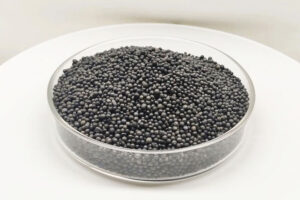ceramic sand can indeed be used in 3D printing, primarily in the field of sand mold 3D printing technology. This technology is relatively mature and has demonstrated its value in various industries, including casting, cultural and creative industries, and sculpture.
🧪 Measures to Improve 3D Printing Results with ceramic sand
Although ceramic sand offers superior performance, achieving optimal 3D printing results requires careful consideration of the following:
Sand pretreatment is crucial: Before printing,ceramic sand may need to be cleaned, soaked (e.g., using an aqueous solution of sodium dodecyl sulfate), and dried[8] to remove surface impurities and improve compatibility with the binder.
Strict process parameter control: Sand 3D printing, especially binder jetting, is highly sensitive to parameters such as ambient temperature and humidity, sand temperature, binder jetting volume, and speed.[2] Even slight fluctuations in these parameters can affect the strength and quality of the final sand mold. Advanced printing equipment typically integrates constant temperature and humidity systems, sand heating devices (e.g., electromagnetic heating), and precise metering systems.[2]
Optimizing the coated sand formulation (for SLS technology): When using SLS technology, the coated sand formulation requires careful adjustment, including the resin type (e.g., thermoplastic phenolic resin), resin content, and curing agent type and content.[36] Optimizing process parameters (such as laser power, scanning speed, and powder layer thickness) through methods such as orthogonal testing is key to ensuring the initial strength and final performance of sintered parts.
Post-processing: Sand molds printed using SLS technology have low initial strength and typically require post-processing (such as heat curing) to achieve the required strength for casting.
🔍 Application Considerations
The use of ceramic sand in 3D printing also faces some challenges:
Cost Considerations: The raw material cost of jelly sand is generally higher than that of traditional quartz sand.
Technical Debugging and Adaptation: Printing parameters and post-processing techniques must be optimized based on the specific 3D printing equipment and casting requirements to fully utilize the performance advantages of jelly sand.
💎 Summary
With its excellent refractoriness, low expansion, good flowability, and low binder requirement, ceramic sand is ideally suited for sand 3D printing, particularly in demanding casting applications and the manufacture of complex structures. It can significantly improve casting quality, shorten manufacturing cycles, and enable design freedom.
While relatively expensive and requiring strict process control, with the continued advancement of 3D printing technology and cost optimization, the use of ceramic sand in this field is expected to become more widespread.


